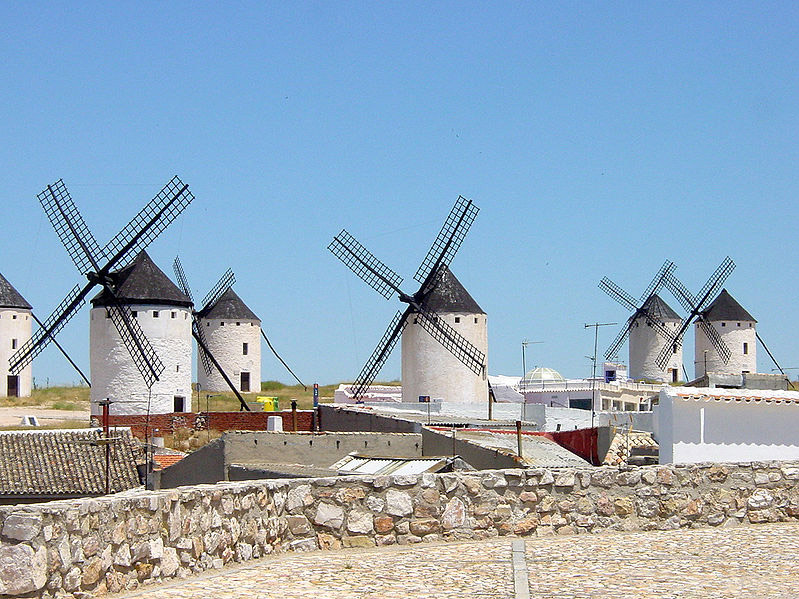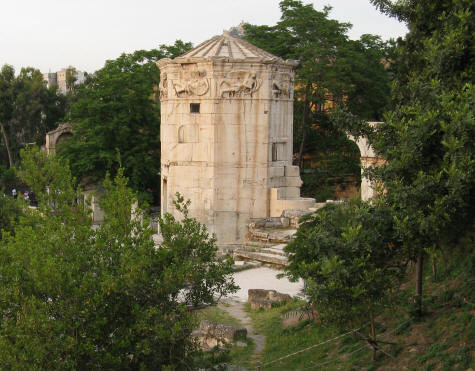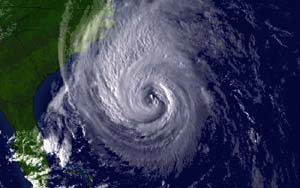Lesson: Harnessing Wind
(Provided courtesy of Teachengineering.org) Level: grades 3-5. Time required: 50 minutes.
This 50-minute lesson for grades 3-5 introduces the ways that engineers study and harness the wind. Students will learn about the different kinds of winds and how to measure wind direction; how air pressure creates winds, and how engineers build and test wind turbines to harness energy from wind. A separate activity, Bubble-ology, introduces students to aerodynamics by challenging them to devise the best ways to keep a bubble aloft.

Engineering Connection
Engineers monitor, use and design technology around wind. To make weather predictions, they design devices such as anemometers and weather vanes to measure wind velocity, force and direction, and predict wind patterns. To tap wind as a renewable energy source, engineers design wind turbines, windmills and wind farms. Engineers also consider wind and aerodynamics (minimize friction due to wind) in their design of cars, bridges, airplanes, structures and recreational equipment (hang gliders, sailboats).
Educational Standards: Click here to find out how this lesson fits your state’s requirements.
After this lesson, students should be able to:
• Understand the properties of wind.
• Describe basic Greek mythology around wind.
• Understand how wind affects humans.
• Understand that wind is a renewable energy source.
• Understand how engineers work to monitor wind and design technology to capitalize on wind energy.
Introduction/Motivation
Wind is so important that the Greeks had eight Gods and a king of the four winds. The four original and most famous are: Aeolus, the Greek King of the Winds who had four sons; Zephyrus, the God of the West Wind; Boreas, the God of the North Wind; Notus, the God of the Southern Wind; and Eurus, the God of the East Wind. The Greeks knew that wind had many different characteristics and believed in a God for each one. Can you think of the different characteristics of wind? One characteristic is strong winds (Boreas), one is rainy winds (Eurus), one is fog and misty rains (Notus) and the last is gentle winds (Zephyrus). The “Tower of the Winds,” built 2000 years ago in Athens,

- Tower of the Winds
Greece, is an octagonal tower with a God of the Wind on each side. There are actually thirty-two recognized directions in which winds blow, and there are thirty-two divisions on a compass.
What exactly is wind? Basically, it is just the movement of air. Air generally moves from areas of high to low pressure, creating winds. It can be the movement of air on a local scale such as your neighborhood (local winds) or the movement of air across the whole globe (global winds). Wind can be strong and heavy or light little breezes. Have you ever been outside when it is really windy? Have you ever seen garbage cans or leaves blown around by the wind? Sometimes we think that wind is scary when it howls really loudly at night. The wind can sometimes be our enemy — when it is so strong that it blows down buildings and causes billions of dollars worth of damage. On the other hand, the wind can also be our friend. It can produce energy and transport goods and humans. We can do fun things with wind, such as fly a kite, parasail and hang glide.
Do you think we could ever run out of wind? Well, wind is a renewable energy source. This means that wind can generate energy — like the energy we use to heat our homes — via windmills and wind farms. Being a renewable resource also means that wind is a resource that we will not use up.
Engineers work with all aspects of the wind. They develop wind turbines to harness energy from the wind and design better planes to fly through the wind. Engineers also build devices to monitor and measure wind, such as anemometers and wind vanes, to help predict wind patterns. Using this information, engineers can design better structures to resist the force of heavy winds and advanced warning systems for tornados and hurricanes.
Lesson Background and Concepts for Teachers
Winds are caused by differences in air pressure and temperature. Meteorologists have made enough observations to define areas of high and low pressure across the Earth. For example, along the equator we normally find low air pressure. In addition, the sun heats the equator more than any other place on earth. These factors, combined with rotation of the Earth (or Coriolis Effect), create global winds. Air tends to move towards the equator because air generally moves from areas of high to low pressure, thus creating winds. The winds from the north and south converge at the equator because hot air rises and then cools. The Coriolis Effect diverts the air to the right in the northern hemisphere and to the left in the southern hemisphere. Without this diversion, air would just sink and return to the equator; but the Coriolis Effect moves the air back to the middle latitudes to start the process over again, creating a rotating effect. Similarly, some of the air from the middle latitudes moves to a low pressure area at the poles.
The global winds described above are named according to where they originate and to where they move. The prevailing westerlies move west to east from the middle latitudes toward the poles between 30 degrees and 60 degrees latitude. The polar easterlies move east to west from the poles to the middle latitudes as the air cools and sinks. The trade winds are winds that move from the middle latitudes toward the equator. They are called trade winds because they created an easy route for early explorers’ sailboats– and, they helped Christopher Columbus find the New World! The area where the trade winds converge near the equator is called the doldrums. This is where the air rises and is characteristic of calm, warm winds.
Winds are also created by local differences in air pressure and temperature, as well as surface disruptions, such as mountains, cliffs and trees. These are measured only on a local scale and last for a few hours or days. Wind blows against the surface of the Earth, and a force called friction slows the wind down. Other obstacles can also affect the wind, including buildings and vehicles. Can you think of any factors?

- Hurricane Isabel, 2003
On hot summer days, many people like to go to the beach because of a local wind called a sea breeze. Sea breezes form because the land heats up faster then the ocean during the day and causes hot air to rise over the land. This in turn creates a low pressure that draws cool air in from the sea and feels great as you walk along the shore. During the night, the opposite happens and land breezes are formed. These breezes are not very strong because the temperature and pressure difference are less. Monsoons are similar to land and sea breezes, but they occur over a large scale and change from season to season, rather than day to night like land and sea breezes. One place monsoons transpire is in Southern Asia. During the summer months, the monsoon wind blows from the Indian Ocean and the South China Sea to the land. These monsoons are often accompanied with tremendous rains. During the winter, the wind direction switches and blows from the land to the sea. These winds are dry, resulting in clear weather for Southern Asia.
Finally, mountains, like oceans, often create an imbalance in air pressure and temperature. Mountains have many different types of wind: two examples are mountain and valley breezes. Valley breezes occur when valleys are heated; the air is warmed causing wind to blow up the slope of the mountain. Mountain breezes occur at night when the air cools and blows back down the mountain. Another example of winds caused by mountains is the Chinook winds in the Rocky Mountains.
Vocabulary/Definitions
Air Masses: Large areas of air defined by common air pressure and temperature.
Air Pressure: Pressure caused by the weight of the air.
Anemometers: A mechanical device that measures wind velocity and force.
Chinook Winds: An example of winds caused by mountains found in the Rocky Mountains.
Climate: Local conditions of a region including wind conditions and temperatures.
Coriolis Effect: A global force that causes air to move in a circular motion because of the Earth’s rotation.
Doldrums: The region near the equator that has very little wind.
Equator: The imaginary great circle around the Earth’s surface that divides the Earth into the Northern Hemisphere and the Southern Hemisphere.
Land Breeze: A breeze that blows from the land toward open water.
Monsoon: Wind from the southwest that is accompanied by heavy rain.
Prevailing Westerlies: Wind that moves west to east from the middle latitudes toward the poles between 30 degrees and 60 degrees latitude.
Polar Easterlies: Wind that flows from the north and south poles to the middle latitudes.
Sea Breeze: A cool breeze blowing from the sea toward the land that generally occurs in the early morning.
Trade Winds: Air currents that move back to the equator.
Troposphere: The lowest region of the atmosphere between the Earth’s surface and the tropopause, characterized by decreasing temperature with increasing altitude.
Lesson Closure
Review global and local winds and how air pressure can cause wind as air moves from areas of high to low pressure. Remind students how engineers use the wind for energy and to predict weather. Discuss how engineers make devices such as wind vanes to measure winds and wind turbines to harness energy from the wind. Explain that engineers can use the information gathered from a wind vane to decide where to locate and better build a wind turbine or shelter a building.
Assessment
Pre-Lesson Assessment
Discussion Questions: Solicit, integrate, and summarize student responses.
• What is wind?
• Do you have an interesting story about a windy day?
Post-Introduction Assessment
Question/Answer: Ask students questions and have them raise their hands to respond.
• How many Greek Gods of the Wind are there? (Answer: There are four Gods of the wind and one king of those Gods.)
• What is wind? (Answer: It is the movement of air.)
• How can wind be our friend? (Answer: It can produce energy and transport goods and humans. We can do fun things with it, such as fly a kite, parasail and hang glide.)
• What type of energy source is wind? (Answer: Wind is a renewable energy source. This means that wind can generate energy — like the energy we use to heat our homes — via windmills and wind farms.)
• What does renewable resource mean? (Answer: Renewable resource means that it is resource that we will not use up.)
• What do engineers have to do with wind? (Answer: They develop wind turbines to harness energy from the wind and design better planes to fly through the wind. Engineers also build devices to monitor and measure wind, such as anemometers and wind vanes, to help predict wind patterns. Using this information, they can design better structures to resist the force of heavy winds and advanced warning systems for tornados and hurricanes.)
Lesson Summary Assessment
Sounds of the Wind: Ask the students to come up with a sound for each of the four wind Gods (North, South, East, and West). Then take turns practicing the sounds with the whole class. As you continue your activities and the study of winds, use the sounds to help students remember that wind has many different characteristics.
Toss-a-Fact: Students work in teams and toss a ball or wad of paper back and forth. The student with the ball says a fact about wind and then tosses the ball to someone else. Each time a student catches the ball, they can list off a fact about wind or engineers (i.e., the doldrums are located near the equator, engineers get energy from the wind, wind is a renewable resource, and so on.) Continue to toss the ball until you run out of facts. Make it a contest to see how long the group can list facts about the wind.
Lesson Extension Activities
Bubble-ology: Keep a bubble afloat
Go on a field trip to a weather station.
Invite an engineer who specializes in airplanes (an aeronautical engineer) to talk about airplanes and how they are built with wind as a consideration.
References:
http://sln.fi.edu/tfi/units/energy/blustery.html
http://www.windpower.org/composite-85.htm
http://kids.earth.nasa.gov/archive/nino/global.html
Dorros, Arthur. Feel the Wind. New York: HarperCollins Publishing Co., 2002.
Fowler, Allan. Can You See the Wind? Chicago: Children’s Book Press, 1999.
Graham, Ian S. Wind Power: Energy Forever. Chicago: Heinemann-Raintree Publishers, 1999.
Kennedy, Dorothy. Make Things Fly: Poems About Wind. New York: Margaret McElderry Books, 1998.
Owen, Andy, Ashwell Owen and Miranda Ashwell. Wind: What is Weather? Chicago: Heinemann-Raintree Publishers, 1999.
Owner: Integrated Teaching and Learning Program, College of Engineering, University of Colorado at Boulder Contributors: Jessica Todd, Melissa Straten, Malinda Schaefer Zarske, Janet Yowell
Copyright 2004 by Regents of the University of Colorado.
Filed under: Grades 6-8, Grades K-5, Lesson Plans
Tags: Aerodynamics, Wind Technology








